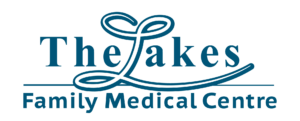
Staying physically active is essential for good health at any age. While many people focus on diet and nutrition, physical activity is just as important for maintaining energy, managing weight, reducing stress and preventing chronic disease. But exactly how much physical activity do you need?
Whether you are a parent with young children, a busy professional, or an older adult looking to stay independent, understanding how much movement your body needs can help you make better health choices. In this article, we break down the recommended physical activity levels by age, highlight the benefits of regular exercise and offer practical ways to stay active every day.
Why Is Physical Activity Important?
Before we dive into the numbers, let’s consider the benefits of physical activity. Regular movement helps:
- Maintain a healthy weight
- Improve heart and lung health
- Boost mood and reduce symptoms of anxiety and depression
- Build muscle strength and bone density
- Improve flexibility, coordination and balance
- Lower the risk of chronic diseases such as heart disease, type 2 diabetes and some cancers
- Reduce the impact of ageing
Additionally, being active reduces sedentary behaviour, which is associated with a range of health risks even if you already exercise regularly.
How Much Physical Activity Do I Need? (By Age Group)
Australia’s Physical Activity and Sedentary Behaviour Guidelines outline how much movement is needed to support good health at each stage of life. Below is a summary of these physical activity recommendations.
Infants and Toddlers (0–5 years)
Movement supports physical and cognitive development in early childhood.
- Babies (0–1 year): Encourage supervised floor play, including tummy time, every day.
- Toddlers and pre-schoolers(1–5 years): Need at least 3 hours of active play per day, spread throughout the day.
- Screen time: Avoid screens for under 2s; limit to less than 1 hour per day for ages 2–5.
Children (5–12 years)
Children should engage in both structured and unstructured play that builds strength, coordination and confidence.
- At least 60 minutes of moderate to vigorous intensity activity every day
- Include aerobic activities like walking, cycling, swimming and jumping
- Include muscle and bone-strengthening activities at least 3 times per week
- Limit screen time to no more than 2 hours per day
Teenagers (13–17 years)
Teenagers should stay active to support their physical health and emotional wellbeing during this critical developmental period.
- At least 60 minutes of moderate to vigorous physical activity daily
- Include both aerobic and strength-based activities, such as sports or resistance exercises
- Aim to reduce screen time to under 2 hours per day and avoid extended sitting
Adults (18–64 years)
Adults benefit from consistent movement to manage stress, prevent disease and support overall fitness.
- Aim for 150–300 minutes of moderate intensity activity per week, or
- 75–150 minutes of vigorous intensity activity per week, or
- An equivalent combination of moderate and vigorous activity
- Include strength-training activities at least 2 days per week
- Minimise sedentary behaviour by taking breaks from long periods of sitting
Older Adults (65+ years)
As we age, staying active is vital for maintaining independence, strength and mobility.
- Be active on most, preferably all, days of the week
- Aim for at least 30 minutes of moderate activity daily
- Include exercises that improve balance, strength, flexibility and coordination
- Start slowly and build up activity gradually if returning from a period of inactivity
What Counts as Moderate or Vigorous Physical Activity?
Understanding exercise intensity helps you choose activities that suit your fitness level and goals.
Moderate-intensity activities:
- You can talk, but not sing
- Examples: brisk walking, dancing, cycling on level ground, gardening, active household chores
Vigorous-intensity activities:
- You are huffing and puffing; conversation is limited
- Examples: running, fast cycling, team sports, high-intensity interval training (HIIT)
Aim to include a mix of both in your weekly routine for optimal health benefits.
Strengthening Activities Are Essential
Do not overlook the importance of muscle-strengthening exercises, which improve posture, bone health and overall strength.
Examples include:
- Push-ups, squats, lunges, planks
- Resistance band or weight training
- Yoga, Pilates, or bodyweight workouts
- Climbing, swinging, or martial arts (great for children and teens)
Aim for two or more days per week of strength-based exercises, at any age.
Easy Ways to Add More Movement to Your Day
Fitting physical activity into a busy lifestyle does not require big changes. You can build more movement into your day with these simple ideas:
At Home:
- Walk the dog or take a morning walk
- Do yard work or gardening
- Walk the kids to school
- Dance while doing chores
- Stretch or do light exercises during TV ads
At Work:
- Take the stairs instead of the lift
- Stand up while on phone calls
- Schedule walking meetings
- Walk during breaks or lunch
- Use a standing desk or stretch every hour
At Play:
- Plan active family outings (hiking, swimming, or cycling)
- Join a community fitness class or sports team
- Choose walking or cycling for short errands
- Try new recreational activities that keep you moving
Final Thoughts
No matter your age or fitness level, regular physical activity is one of the most important investments you can make in your health. It improves your physical condition, enhances your mental wellbeing and helps prevent chronic disease. Whether you are doing moderate walking, vigorous sport, or strength training, every movement counts.
At Lakes Family Medical Centre, we encourage active living through all stages of life. Our team can help you develop a realistic routine, connect you with allied health professionals and support your journey toward better health. If you are ready to move more and sit less, we are here to help.
Learn more about The Lakes Family Medical Centre :



